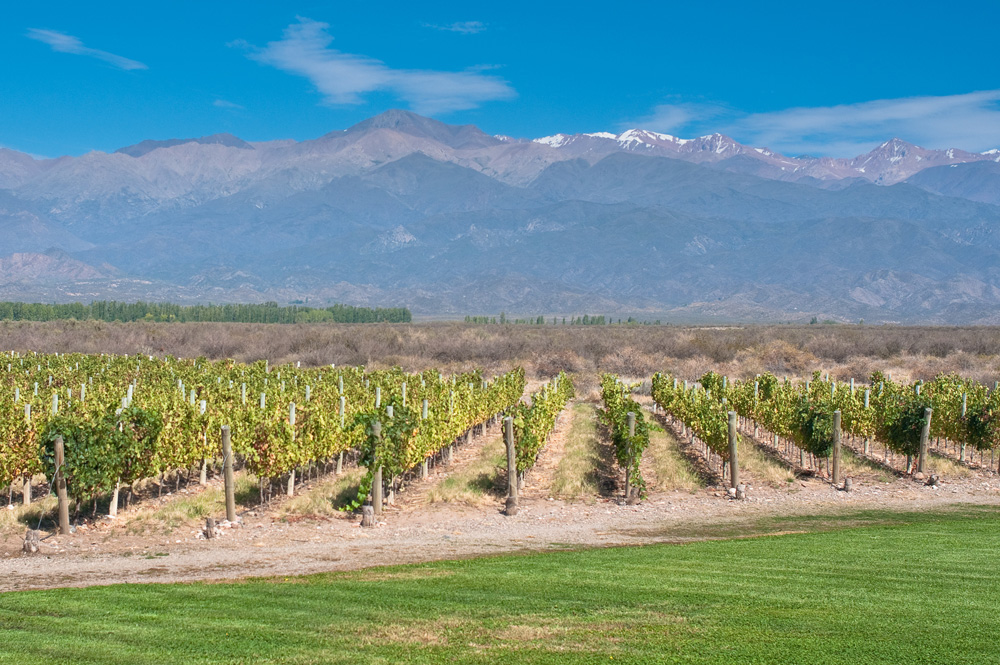Argentina is South America’s most prolific wine producer and one of the top wine countries in the world. Malbec from Argentina has become one of the most fashionable wines in the United States, particularly in steak houses, as a full-bodied, structured alternative to Cabernet Sauvignon. There are many wines currently available from Argentina that are typically a great value, given their current exchange rate, excellent terroir, and advanced winemaking techniques.

History
Unlike North America, South America does not have a native grape species. They have been growing European grapes almost exclusively since the first grapes arrived in Spain in 1541. The first vineyard was established by Jesuit missionaries in 1557.
Most of the vineyards are in the western part of the country, near the Andes Mountains, where creative use of irrigation dams and canals – originally established by the native population – allowed for vineyards in places that would otherwise be too dry.
The grape that dominated Argentine production for nearly 300 years is a white variety known as “Criolla Chica.” In recent decades, Malbec – originating in the Cahors region of France – has emerged as the most famous grape for exports and high-end bottles. The warm, sunny summers in Argentina lead to very ripe grapes with a full-bodied, fruit-forward, New World style. Since the 1980s, wineries have been quick to adopt modern winemaking techniques, making Argentina one of the more innovative and forward-looking countries in the wine world.

Mendoza

About 70% of the Argentina’s wine production takes place in Mendoza. Its stunning vineyards emerge like green islands in the midst of a dry desert with the snow-capped Andes Mountains dominating the horizon. Malbec seems to be as at home here as anywhere else in the world, but a stunning array of wines are produced in Mendoza, including Pinot Noir, Cabernet Sauvignon, Merlot, Syrah, Bonarda, Sauvignon Blanc, Chardonnay, and Torrontés. There are several sub-regions in Mendoza that are of particular importance.
Luján de Cuyo, established in 1993, was the first official appellation in Argentina for Malbec. This is the home of the most famous and well-established wineries in the country.
The Uco Valley is the most fashionable sub-region in Argentina, with cool temperatures and high elevation resulting in dry wines with hefty tannins and bright acidity. Chardonnay, Malbec, and Cabernet Franc are particularly successful here so far.
Other productive sub-regions in Mendoza include Maipú, San Rafael, and General Alvear.
San Juan

San Juan, the second biggest wine producing region in Argentina, is known for Syrah rather than Malbec. There are also significant plantings of Viognier, Chardonnay, and Pinot Gris. The best vineyards are at higher elevation and quality continues to improve.
La Rioja

The oldest wine producing region in Argentina, La Rioja, isn’t well known internationally, as production is dominated by a single large cooperative, La Riojana, which makes some lovely wines from the aromatic white grape Torrontés.
Additional regions of note include Salta and the remote Patagonia. Argentina is producing wines that rival any in the world at great prices. Their winemaking and terroir result in innovative wines from fantastic vineyards. The exploration of Argentina as a wine producing country by both producers and consumers is just beginning. Keep an eye out for exciting new developments in the coming years.



